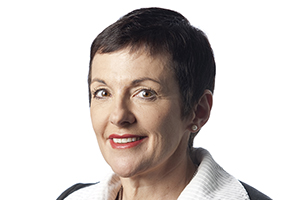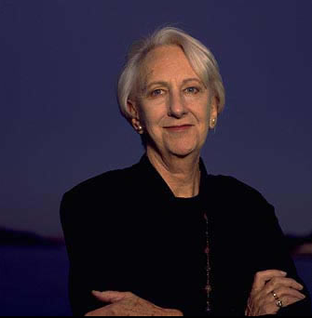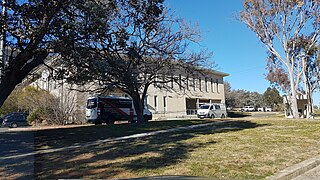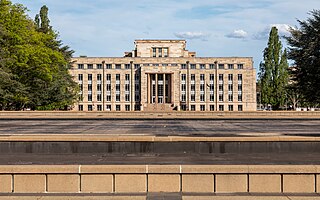Matra Marconi Space (MMS) was a Franco-British aerospace company.

Anne Katherine Carnell is an Australian businesswoman and former Liberal Party politician, who served as the third Chief Minister of the Australian Capital Territory (ACT) from 1995 to 2000.
Ball Aerospace & Technologies Corp. is an American manufacturer of spacecraft, components and instruments for national defense, civil space and commercial space applications. The company is a wholly owned subsidiary of Ball Corporation, with primary offices in Boulder, Colorado, and facilities in Broomfield and Westminster in Colorado, with smaller offices in New Mexico, Ohio, northern Virginia, Missouri and Maryland.

STS-67 was a human spaceflight mission using Space ShuttleEndeavour that launched from Kennedy Space Center, Florida on 2 March 1995.

Canberra Airport is an international airport situated in the district of Majura, Australian Capital Territory, serving Australia's capital city, Canberra, as well as the nearby city of Queanbeyan and regional areas of the Australian Capital Territory and southeastern New South Wales. Located approximately 8 km (5.0 mi) from the city centre, within the North Canberra, it is the ninth-busiest airport in Australia.
Raelene Ann Boyle is an Australian retired athlete, who represented Australia at three Olympic Games as a sprinter, winning three silver medals, and was named one of 100 National Living Treasures by the National Trust of Australia in 1998. Boyle was diagnosed with breast cancer in 1996 and subsequently became a board member of Breast Cancer Network Australia (BCNA). In 2017, she was named a Legend in the Sport Australia Hall of Fame.

Ruth Winifred Cracknell AM was an Australian character and comic actress, comedienne and author, her career encompassing all genres including radio, theatre, television and film. She appeared in many dramatic as well as comedy roles throughout a career spanning some 56 years. In theatre she was well known for her Shakespeare roles.
Ernest William Sigley was an Australian television host, comedian, variety performer, radio presenter and singer. Known as a pioneer of radio and television in Australian, he was often styled as a "little Aussie battler" with a larrikin sense of humour.

Commonwealth Park is in Canberra, Australia, adjacent to the north side of Lake Burley Griffin. Centrally located in the city, it is an important part of the urban landscape. The park has an area of 34.25 hectares, which includes a variety of natural and constructed spaces.
Sunstate Airlines is a subsidiary of Qantas which operates regional flights under the QantasLink banner throughout Queensland, and between Brisbane and Canberra. Its head office is in Bowen Hills, Brisbane.
Live and Sweaty was an Australian sports television program, broadcast on the ABC from 1991 until 1994. Hosted by Andrew Denton, the show was part panel-based, part talk show and part comedy, and predated The Footy Show which has a similar format.

The Orbiting Solar Observatory Program was the name of a series of American space telescopes primarily intended to study the Sun, though they also included important non-solar experiments. Eight were launched successfully into low Earth orbit by NASA between 1962 and 1975 using Delta rockets. Their primary mission was to observe an 11-year sun spot cycle in UV and X-ray spectra. The initial seven were built by Ball Aerospace, then known as Ball Brothers Research Corporation (BBRC), in Boulder, Colorado. OSO 8 was built by Hughes Space and Communications Company, in Culver City, California.

The Canberra light rail network, also known as Canberra Metro, is a light rail system serving the city of Canberra, Australia. The initial 12-kilometre (7.5 mi) line links the northern town centre of Gungahlin to the city centre (Civic) and has 14 stops. Services commenced on 20 April 2019. The 14th stop at Sandford Street in Mitchell commenced operation in September 2021.

ULTRASAT is a space telescope in a smallsat format with a large field of view, 210 square degrees, that will detect and monitor transient astronomical events in the near-ultraviolet (220–280 nm) spectral region. ULTRASAT will observe a large patch of sky, alternating every six months between the southern and northern hemisphere. The satellite will be launched into geosynchronous orbit in early 2026. All ULTRASAT data will be transmitted to the ground in real time. Upon detection of a transient event, ULTRASAT will provide alerts within 20 minutes to other ground-based and space telescopes to be directed to the source for further observation of the event in other wavelength bands.

The Deakin Telephone Exchange is an exchange established in 1965, the bottom floor of which was used in the NASA Communications Network (NASCOM) until 1988, when the Canberra Deep Space Communication Complex took over its role.
The Australian Space Office (ASO) was an agency formed by the Hawke government in 1987 to oversee the National Space Program. The office worked on the initiative along with the Australian Space Board, later the Australian Space Council. As part of the larger National Space Program, the ASO was established specifically to act as the secretariat and day-to-day manager of the advisory decisions made by the ASB/ASC. The office was abolished in 1996 by the Howard government after a review by the Bureau of Industry Economics.
The Australian Space Board was a board that made up part of the Australian National Space Program initiative from 1986 until it was superseded by the Australian Space Council in 1994.

The National Space Program was a set of policies and organisations under the Hawke and Keating governments created with the goals of developing a national space industry in Australia. When the Howard government came to power in 1996 the program was abolished following the advice of the Bureau of Industry Economics. The National Space Program was generally considered a failure by most media after its demise. During its existence it was crippled by a lack of budget, and multiple white elephant projects.
Mainline Corporation Ltd ("Mainline") was one of Australia's largest construction companies during the late 1960s and early 1970s. Mainline Corporation was responsible for building some of Australia's most notable landmark buildings before its collapse in 1974.

The John Gorton Building, also referred to as the Gorton Building and formerly the Administrative Building, is a heritage listed government office located within the Parliamentary Triangle in Canberra, Australia. The office building is the administrative headquarters of the Department of Climate Change, Energy, the Environment and Water.











